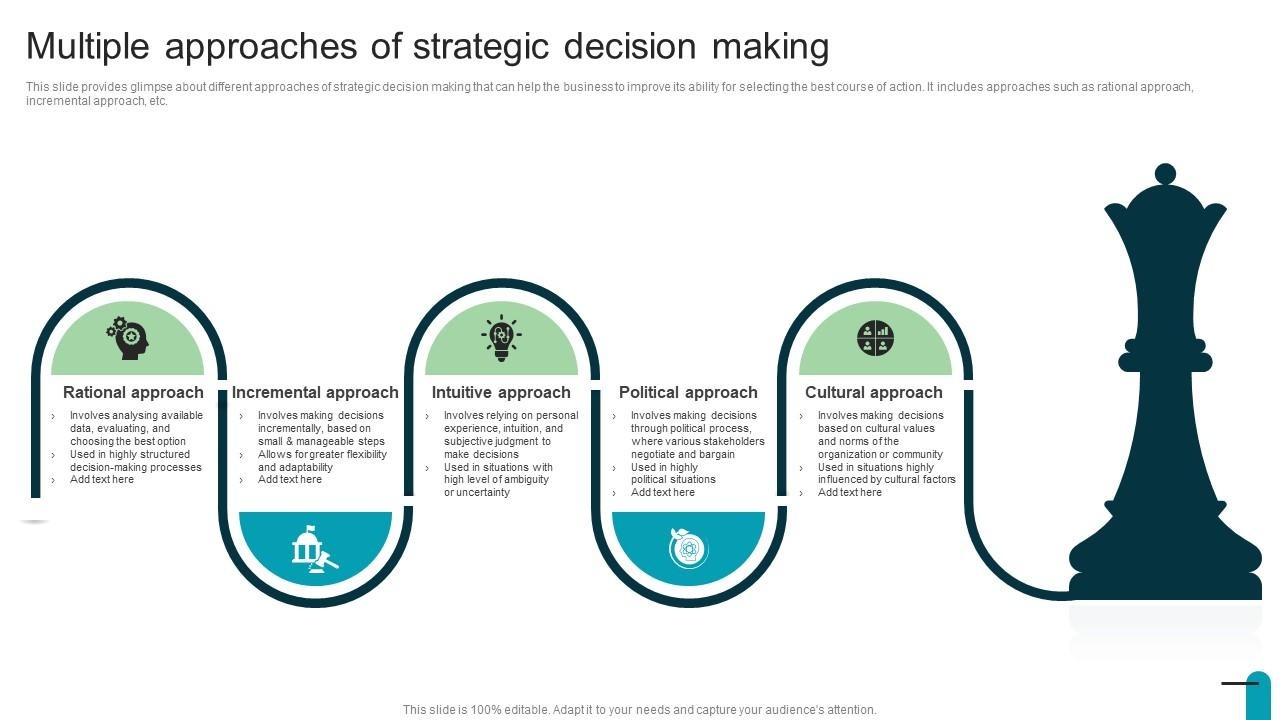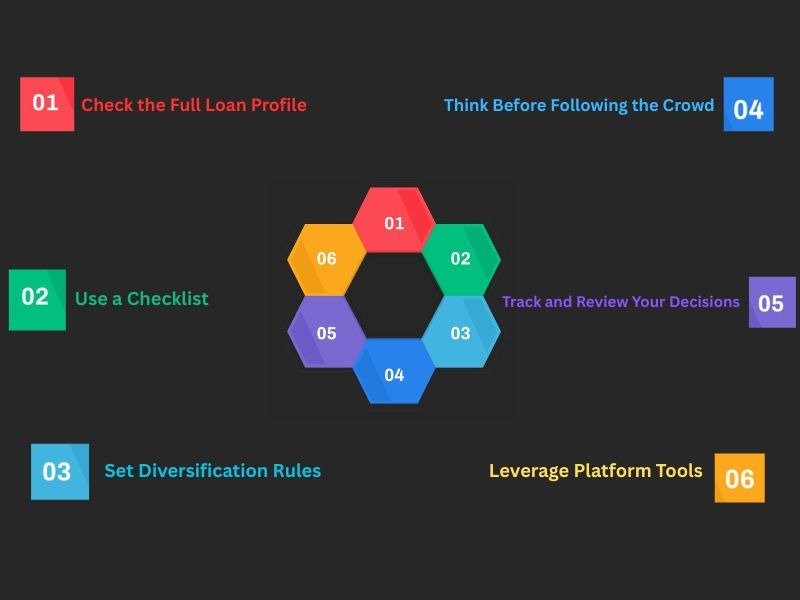How Emotions Influence Loan Selection
It's easy to think you're using logic when choosing which loans to invest in. But emotions quietly guide the decision in most cases. A borrower's story or even photo can create a sympathy-based trust that causes you to overlook real risks. Similarly, you might feel connected to someone who sounds responsible, yet their credit score says otherwise.
We'll use an example. Loan A offers a 16% return but carries a 30% default risk. Loan B offers an 8% return with only a 2% chance of default. Which one will you choose?

Many investors will pick the former because of the high return. They'll ignore the fact that the risk is far greater. Greed clouds the numbers. Suppose you had a bad experience with a similar loan in the past. You might avoid Loan C's solid repayment history because it reminds you of that loss. Your fear makes you overlook this option, even with its 90% repayment rate.
The fact that hundreds of people are funding Loan D makes you feel it must be a good choice despite the borrower's weak financials. That's emotion.
The Emotional Rollercoaster of P2P Investing
A peer-to-peer (P2P) lending investment should look beyond the numbers to navigate the highs and lows of human emotion. The promise of high returns can be thrilling, but so is the anxiety of losing your capital. These emotional swings are expected.
Successful P2P lending investors recognize the inner forces at play. The following key emotions shape your investing behavior:
Greed
The temptation of high returns can sneak in the moment you see a double-digit return rate on a P2P lending platform. You'll want to chase higher yields, potentially ignoring warning signs.

For instance, the promise of 15% returns can blind you to high default risks. A loan yielding 15% with a 12% loss rate only nets 3%. You have to recognize when ambition turns into reckless optimism.
Fear
Economic downturns or negative news about a platform can cause fear. Even a 2% dip can spark panic selling. You might find yourself exiting at $980 from a $1,000 investment. This means you'll lock in losses and miss a possible recovery of $1,080.
Fear has caused investors to withdraw early and miss recovery opportunities. Some end up avoiding investing altogether.
Confirmation Bias
This bias kicks in once you've formed a belief about a P2P platform or strategy. You'll start looking for evidence that supports your viewpoint and ignoring anything that contradicts it.

It's easy to overlook signs of borrower risk if you believe high-yield loans are always worth it. Stay objective and challenge your assumptions to make data-driven investment decisions.
Loss Aversion
Losses feel worse than gains feel good in P2P lending. This phenomenon results from the powerful bias that makes you fear losses more than you value gains.
Loss aversion may cause investors to overreact to small setbacks. Some become overly cautious after a negative experience. They end up under-investing and adopting poor diversification techniques.
Overconfidence
Many investors believe they can spot a bad loan or pick only winners based on gut feeling or a few past successes. But the thought that you can outsmart platforms leads to risky bets.

For instance, selecting five high-yield loans and losing two results in a 40% default rate. Avoid this dangerous illusion of control.
Recency Bias
This bias may lead you to believe that a loan type or platform that has recently performed well will keep doing so. Short-term thinking has led investors to chase past winners, but P2P markets are inherently volatile. What worked last month might not work now.
You don't want to rely too heavily on recent performance, as it can result in poorly timed entries. Instead, zoom out and assess trends over longer periods.
That’s why smart platforms like 8lends are built to guide investors beyond emotion. 8lends uses advanced credit models and real-time performance analytics so you don’t have to guess – or rely on gut feeling. Whether you’re worried about herd behavior or recency traps, 8lends helps you make sharper decisions with facts, not feelings.
Herd Mentality
Loan D in the previous section is a perfect case of herd mentality. The knowledge that thousands of investors fund an 8% loan can convince you, despite the investment project having a 10% default rate. This venture is likely to deliver a 2% return.
Moreover, following the crowd can lead to overvalued loans and platform bubbles. You'll also face exposure to unverified risks.
Anchoring
It's possible that the first number you see sticks in your mind and influences all future decisions. Take the example of an investment project with an expected return of 15%. Your expectations remain tied to that initial figure even when conditions change.
This bias can make you overlook updated risk profiles. You might also refuse to adjust your strategy.
Risk Perception vs. Actual Risk in P2P Lending
What you consider a risky P2P lending opportunity isn't always what's actually risky. That gap has cost many P2P investors.

Perception Versus Reality in Strategic Risk Preparedness. Source: BCG strategic risk and resilience survey
Any investor would deem a loan offering 15% returns as a golden opportunity. But you could be dealing with a borrower with a shaky credit history. Meanwhile, a 6% loan looks dull. But it could offer reliable payments. The problem is that our feelings often speak louder than the facts.
Our brains are wired to react to emotions like fear and excitement. One late payment might scare you away from an entire category of loans. A few fast wins might make you overconfident. And it's easy to forget that what looks like a sure bet might be a risky gamble when everyone else seems to be cashing in.
Investors who understand the real risks are less likely to fall for illusions. So stop guessing and start looking at the numbers. The more you rely on real evidence, the better your chances of building long-term gains.
Building a Rational Approach to P2P Investing
You need more than just a desire for good returns to succeed in P2P lending. This investment requires a calm, rational approach. Emotional decisions often lead to poor results. A smart investor learns to trust data and follow a plan. They also stay steady even when the market shifts.

Approaches to strategic decision making
You need a guiding structure, so start by setting clear goals. Are you investing for steady monthly income or long-term growth? A clear goal will help you build a strategy that fits. Use filters to target loans that match your risk level and diversify to lower the impact of any one default.
Savvy investors avoid checking their accounts too often. Frequent updates often lead to emotional reactions. This is particularly true during downturns. Instead, set regular review times to adjust or rebalance your portfolio. It's essential to track your decisions and outcomes continually. You want to spot emotional habits. The more you learn from your behavior, the better your future decisions will be.
A rational mindset doesn't ignore feelings. It knows when to pause and reflect and lets facts lead the way. That's how you stay in control and grow your P2P investments.
How to Avoid The Cognitive Traps
It's challenging to avoid emotional biases in real-time peer-to-peer lending decisions. Even those who are aware of them still face challenges since these mental shortcuts often influence our choices without us noticing.
These proven tips can keep you clear-headed to navigate the common cognitive traps:

Check the Full Loan Profile
The interest rate is just one part of the equation. Go further and review the borrower's credit score and employment status. You'll make better decisions once you've had a complete view.
Use a Checklist Before Investing
A consistent checklist will force you to evaluate each loan fairly. It should include indicators like loan terms, risk rating, and return percentage. Also, check the borrower's background to ground your decisions.
Set Diversification Rules
We've been warned about putting all eggs in one basket for years. Savvy P2P lending investors never put too much money into one loan type. Instead, they set strict limits per loan and stick to them.
Think Before Following the Crowd
Take a moment when a loan gets funded quickly. Are you convinced by the loan details or just the activity? Find space to think independently.
Track and Review Your Decisions
Keep a simple record of why you chose each loan. You'll spot patterns in your thinking over time.
Balancing Emotion and Logic in Portfolio Management
A well-managed P2P lending portfolio goes beyond the numbers. You must know when to ignore your heart and listen to your head. Emotions can push you toward risky or rushed decisions, but logic helps you stay on track. However, you can't ignore emotions entirely, as you could experience burnout.
The key is balance. Use logic to build your strategy, but also check in with your emotions. Take a break before making changes if you're feeling anxious, and double-check your decision with the facts if you're overly excited. Stick to a schedule for reviews to reduce knee-jerk reactions. Also, keep notes on your decisions and their outcomes to learn from your behavior. You'll build a smart portfolio that's emotionally balanced over time.
Want a platform that helps you invest with clarity – not chaos? 8lends is a Swiss peer-to-peer lending platform that blends strong returns with transparent, behavior-aware tools for smarter investing.








